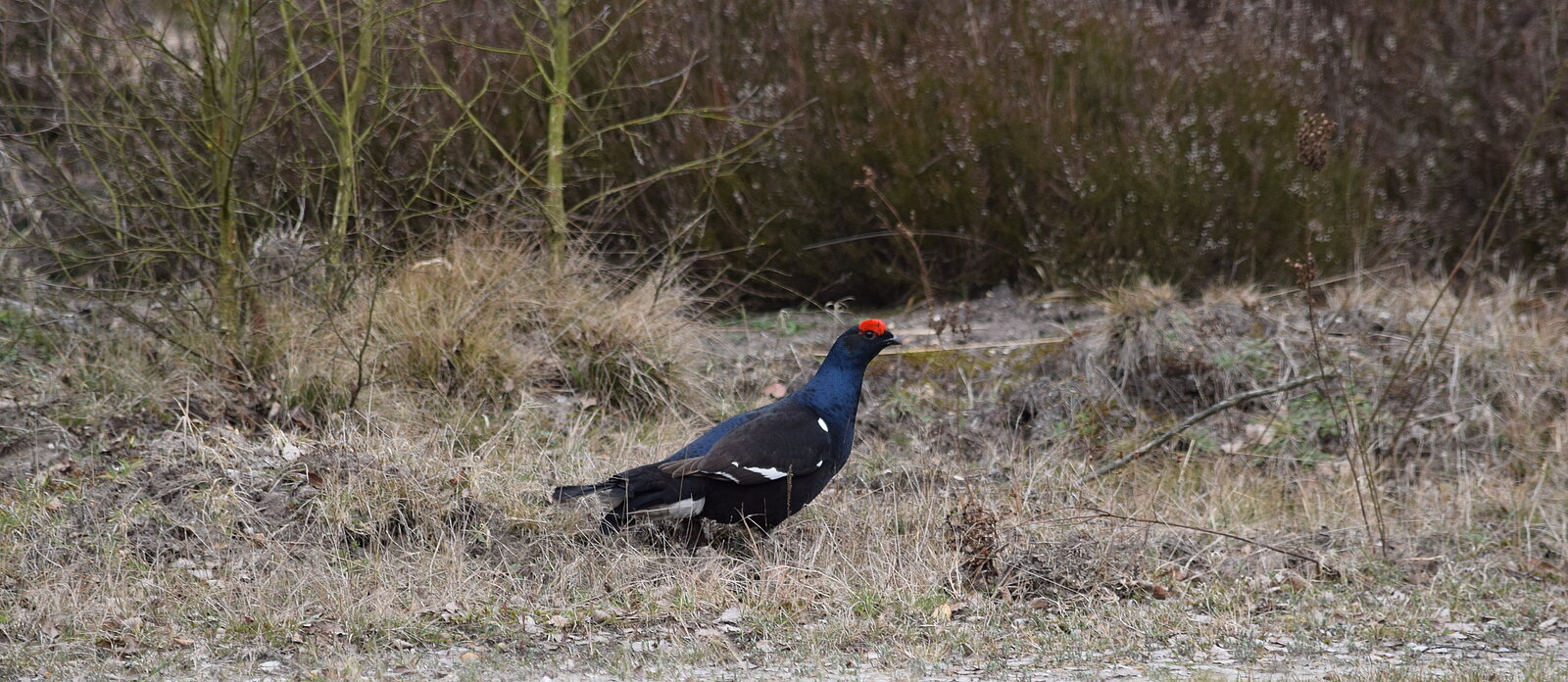
| Project data | |
|---|---|
| Project leader: | Prof. Prof. h. c. Dr. Ursula Siebert |
| Scientific staff: |
Dr. Egbert Strauß, Daniel Tost Denise Neubauer |
| Project term: | 2014 until 2017 |
| Sponsorship: | Hunting fees of the federal state Lower Saxony |
| Cooperation partner: | Verein Naturschutzpark e.V. (VNP): Stiftung Naturschutzpark Lüneburger Heide |
In northern Germany the population of black grouse (Tetrao tetrix) is dispersed among the major habitats of the Lüneburg Heath in Lower Saxony. These major habitats are the nature reserve Lüneburger Heide, the military training areas Bergen and Munster and the firing range of Rheinmetall (Unterlüß). This population, which is considered autochthonous, ranged between 160 and 260 Individuals during the past ten years. Maintenance and improvement of available black grouse habitats and their reconnection with subpopulations are necessary to stabilize the northern German population.
In addition to previous research projects we work on further issues concerning the management of black grouse in the nature reserve Lüneburger Heide. Due to our observations within a telemetry study (5 cocks, 2 hens) in 2011-2012, we found that the proximity of paths and trails as well as forest edges were avoided, resulting in a potential reduction of the available habitat by 40%.
Next to the conserving effect of the nature reserve Lüneburger Heide, it is also used as a recreational area for tourists (i.e. hikers, bikers, riders etc.). Though visitors are restricted to public paths and trails only they cause disturbances in local wildlife. From regions like the Alps, the Rhön Mountains (Bavaria) and the Black Forest (Baden-Württemberg) partly severe impacts of tourism (skiing, hiking etc.) on black grouse and capercaillie are reported. Guiding concepts on trails and paths may help reducing the impacts of anthropogenic disturbances as far as the black grouses seasonal habitat use and the avoidance of sources of disturbance are sufficiently examined.
We therefore aim to gather further data on the habitat use of black grouse regarding the recreational use of the nature reserve, but also the biotope maintenance and the forestry measurements in order to assess and optimize the management plans accordingly.
- The impact of tourism on the black grouses habitat use is evaluated by linking the localizations of GPS-tagged individuals to the frequency and amount of visitors on paths and trails in the nature reserve Lüneburger Heide. In order to count the number of visitors during the course of a day and year respectively, infrared light barriers with integrated data loggers will be installed beside the paths and trails.
- Is there a spatiotemporal adaptation of habitat use to the presence of visitors in general or according to the black grouses mating, breeding and rearing seasons? Are the guiding concepts to be adjusted?
- In a telemetry study we will evaluate the habitat use of black grouse each in the course of a year. Especially lekking, nesting and rearing habitats and winter locations will be identified. Exact distances between the animals locations and paths/trails and forest edges are to be defined.
- Further data will be added to the habitat suitability analyses of 2011-2012 to specify its validity.
- Fecal analyses will help to determine the diet of adult black grouse and consequently to evaluate the food availability in their habitats.


